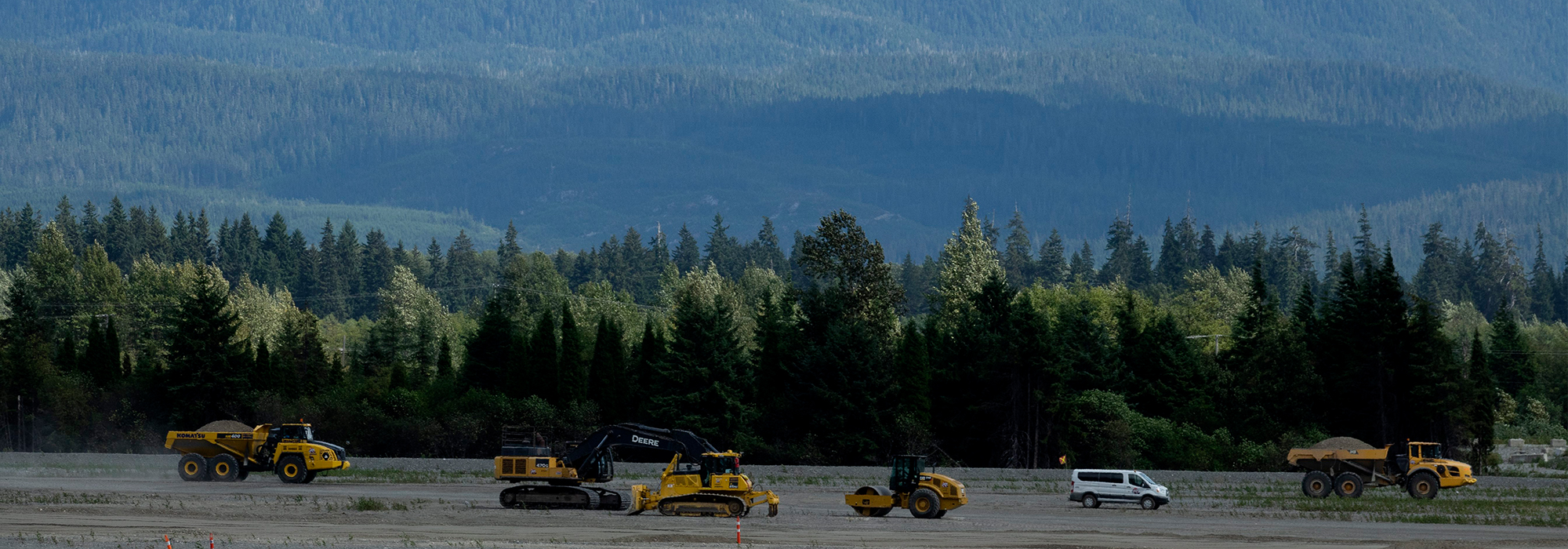
Justin Trudeau set off a social media firestorm during the G20 summit in Argentina in November when he said, “Even big infrastructure projects, you know, might now say, ‘Well, what does a gender lens have to do with building this new highway or this new pipeline or something?’ Well, you know, there are gender impacts when you bring construction workers into a rural area. There are social impacts because they’re mostly male construction workers. How are you adjusting and adapting to those?” A Toronto Sun editorial headline appeared soon after: “Trudeau Unacceptably Smears Construction Workers.” Conservative Party Leader Andrew Scheer called him “a threat to rural Canada” in a tweet. Many Canadians have taken to Facebook and Twitter expressing their anger that Trudeau suggested that they or their husbands, sons or brothers who work in resource industries might be causing harm in rural communities.
We recently completed a report for the Canadian Environmental Assessment Agency, based on a review of over 400 scholarly and community research articles and interviews with seven key informants, about strengthening impact assessments of large resource developments to better understand and consider the experiences of Indigenous women. Our research found that there are both positive and negative — but mostly negative — social, economic, cultural and health impacts for Indigenous (and non-Indigenous) women when a resource development project is situated near their community. These gendered impacts are regularly overlooked in current environmental impact assessment processes.
Gendered impacts of resource development
New employment and business opportunities are some of the most important benefits of resource development for rural and remote communities. Indigenous women who are able to access these opportunities report positive impacts on their self-confidence and financial independence. However, not all women are able to access good-quality, high-paying jobs. Because of persistent gendered work patterns, women typically bear the bulk of care work in families and communities. When child care services are unavailable, unaffordable or inaccessible, women face barriers to accessing the training needed for high-paying jobs, such as those in the trades. The shift work and fly-in, fly-out nature of many resource development industries also creates child care challenges for families. While impact benefit agreements and other arrangements sometimes provide preferential hiring opportunities for Indigenous women, these jobs are often temporary, low-skilled and low-paying, and in traditionally feminine sectors like cooking and housekeeping.
Increases in violence and harassment are common impacts of resource development identified by Indigenous women. Racialized and sexualized violence and harassment are frequently reported by Indigenous women who are employed at resource extraction job sites. Women in communities near resource extraction sites sometimes experience rapid increases in gender-based and sexual violence. In particular, the stress that “two-week-on, two-week-off” industry work schedules place on families sometimes contributes to gender-based violence in workers’ homes. More disposable income can lead to increases in substance use and abuse, which research studies have linked to increased crime rates and increased rates of gendered and sexualized violence for women and girls.
Increases in sex work often accompany resource development industries and the mass influx of primarily male workers to resource towns and work camps. Some women enter sex work as an alternative source of income for themselves and their families, while others are victims of human trafficking.
Nearby resource development projects further strain what are in many cases very limited housing resources in Indigenous communities and in northern municipalities with high numbers of Indigenous people. Indigenous women who experience intergenerational trauma, addictions or mental health crises and who have low levels of education are especially vulnerable to becoming hard-to-house or homeless in these contexts. Others who have jobs with lower incomes than those in resource development sectors can find it hard or impossible to afford housing in their home communities.
The social impacts are both positive and negative, but our research shows that for Indigenous women, and other marginalized members of communities, the negative impacts are in many cases likely to outweigh the positive ones.
Trudeau is correct to call for gender-based analysis. People’s Party Leader Maxime Bernier suggests that considering gender in resource development is “cultural Marxism nonsense,” and others have worried it will be “bad for business,” but gender-based analysis is an analytical tool used around the world by governments, businesses, researchers and nonprofit organizations. The federal government committed to using gender-based analysis plus (GBA+) to guide its decision-making beginning in 1995, although the fall 2015 Auditor General’s report made it clear that the quality of GBA+ in many federal departments has historically been less than ideal.
Using a GBA+ lens involves asking deliberate questions about not only gender but also diversity impacts and outcomes, focusing on who receives most of the benefits and who bears more of the costs in policy planning and decision-making, including decisions about resource development. In this case, it also involves making sure that environmental impact assessment processes seek out and listen to the voices of Indigenous women and other community members whose experiences have historically been overlooked.
Culturally relevant gender-based analysis recognizes the diversity among members of communities. It is an important analytical tool that can help to identify gendered impacts and aid in the development of plans to mitigate the worse impacts on women, to ensure that all members of our communities (Indigenous and non-Indigenous, women and men) can share in the benefits of resource extraction and to make it less likely that more marginalized members of communities, including women and girls and people with disabilities, will face more negative impacts than positive ones.
This article is based on a report co-written with Patricia Nash (independent researcher, Happy Valley-Goose Bay, NL) and Deborah Stienstra (Jarislowsky Chair in Families and Work, University of Guelph).
Photo: Construction vehicles work at the proposed site for a LNG Canada work camp, in Kitimat, BC, on August 22, 2018. THE CANADIAN PRESS IMAGES/Robin Rowland
Do you have something to say about the article you just read? Be part of the Policy Options discussion, and send in your own submission. Here is a link on how to do it. | Souhaitez-vous réagir à cet article ? Joignez-vous aux débats d’Options politiques et soumettez-nous votre texte en suivant ces directives.









